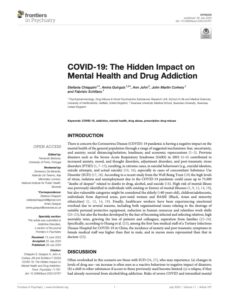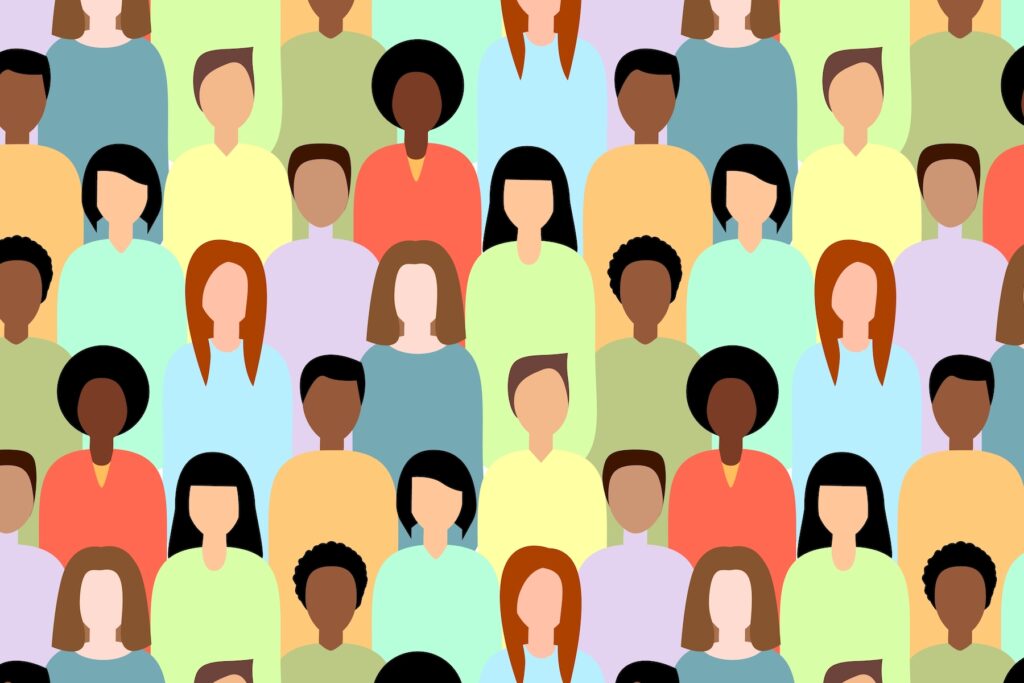 There is concern the Coronavirus Disease (COVID)-19 pandemic is having a negative impact on the mental health of the general population through a range of suggested mechanisms: fear, uncertainty, and anxiety; social distancing/isolation; loneliness; and economic repercussions (1–3). Previous disasters such as the Severe Acute Respiratory Syndrome (SARS) in 2003 (4–6) contributed to increased anxiety, mood, and thought disorders, adjustment disorders, and post-traumatic stress disorders (PTSD) (1, 7–15), resulting, in extreme cases, in suicidal behaviours (e.g., suicidal ideation, suicide attempts, and actual suicide) (10, 16), especially in cases of concomitant Substance Use Disorder (SUD) (17, 18). According to a recent study from the Well Being Trust (18) the high levels of stress, isolation and unemployment due to the COVID-19 pandemic could cause up to 75,000 “deaths of despair” related to deaths to drug, alcohol, and suicide (18). High risk of mental illness was previously identified in individuals with existing or history of mental illnesses (1, 9, 12, 14, 19), but also vulnerable categories might be considered the elderly (>80 years old), children/adolescents, individuals from deprived areas, peri-natal women and BAME (Black, Asian and minority ethnicities) (1, 12, 14, 19). Finally, healthcare workers have been experiencing emotional overload due to several reasons, including both organizational issues relating to the shortage of suitable personal protective equipment, reduction in human resources and relentless work shifts (20–23), but also the burden developed by the fear of becoming infected and infecting relatives, high mortality rates, grieving the loss of patients and colleagues, separation from families (22–24). Specifically, according to Huang et al. (25), among the first-line medical staff of a Tertiary Infectious Disease Hospital for COVID-19 in China, the incidence of anxiety and post traumatic symptoms in female medical staff was higher than that in male, and in nurses more represented than that in doctors (25).
There is concern the Coronavirus Disease (COVID)-19 pandemic is having a negative impact on the mental health of the general population through a range of suggested mechanisms: fear, uncertainty, and anxiety; social distancing/isolation; loneliness; and economic repercussions (1–3). Previous disasters such as the Severe Acute Respiratory Syndrome (SARS) in 2003 (4–6) contributed to increased anxiety, mood, and thought disorders, adjustment disorders, and post-traumatic stress disorders (PTSD) (1, 7–15), resulting, in extreme cases, in suicidal behaviours (e.g., suicidal ideation, suicide attempts, and actual suicide) (10, 16), especially in cases of concomitant Substance Use Disorder (SUD) (17, 18). According to a recent study from the Well Being Trust (18) the high levels of stress, isolation and unemployment due to the COVID-19 pandemic could cause up to 75,000 “deaths of despair” related to deaths to drug, alcohol, and suicide (18). High risk of mental illness was previously identified in individuals with existing or history of mental illnesses (1, 9, 12, 14, 19), but also vulnerable categories might be considered the elderly (>80 years old), children/adolescents, individuals from deprived areas, peri-natal women and BAME (Black, Asian and minority ethnicities) (1, 12, 14, 19). Finally, healthcare workers have been experiencing emotional overload due to several reasons, including both organizational issues relating to the shortage of suitable personal protective equipment, reduction in human resources and relentless work shifts (20–23), but also the burden developed by the fear of becoming infected and infecting relatives, high mortality rates, grieving the loss of patients and colleagues, separation from families (22–24). Specifically, according to Huang et al. (25), among the first-line medical staff of a Tertiary Infectious Disease Hospital for COVID-19 in China, the incidence of anxiety and post traumatic symptoms in female medical staff was higher than that in male, and in nurses more represented than that in doctors (25).


